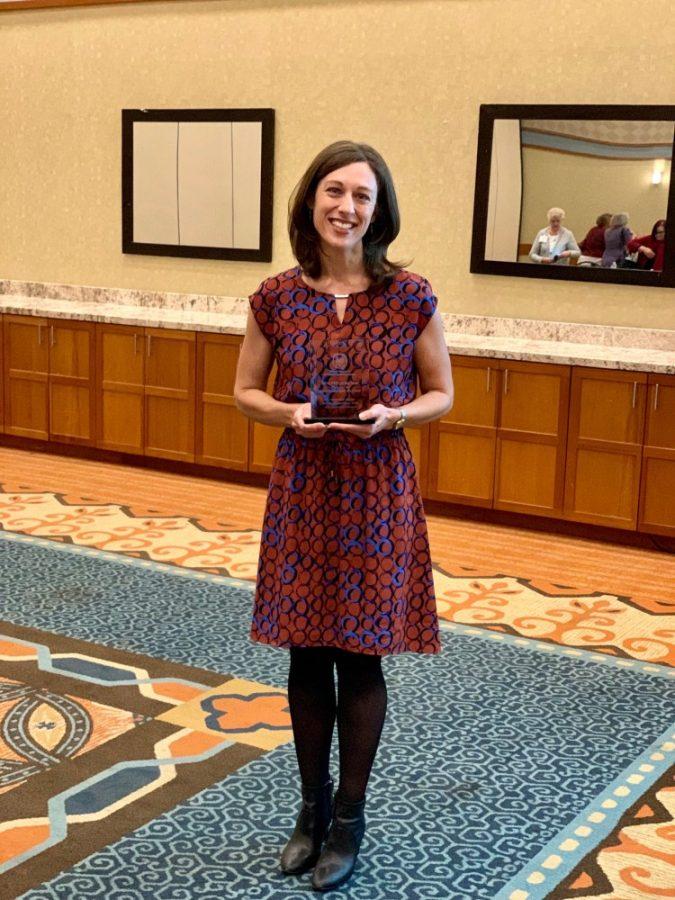Children are in and out of emergency rooms every day. Most are in for accidents or illness — broken bones on playgrounds or the flu — but not always.
Some are seen for abuse-related injuries. However, the U.S. has no standardized screening process to identify the early signs of child abuse in this country’s emergency departments. As a result, cases of physical child abuse fly under the radar.
Sheri Carson, a University of Arizona clinical instructor in the College of Nursing , wants to see that change.
RELATED: From gems to books; campus blossoms in spring
Carson has been dedicated to pediatrics since she graduated from nursing school. While working on this project and as a pediatric nurse practitioner, she witnessed some bad cases of abuse.
“I always dreamed about being a mom, but I wasn’t blessed with children,” Carson said. “When I see children — who I think are a gift — that are experiencing abuse, it just pulls at my heartstrings like nothing else.”
Upon learning the statistics of missed child abuse cases in emergency rooms, Carson sought to improve them.
“Most people don’t like to see children hurt. The whole process of abuse, what mentality makes someone abuse, doesn’t make sense in my head, and that’s been part of my drive to stop it,” Carson said. “It’s very important to me.”
Carson spent the last few years researching and developing an evidence-based screening program to catch signs of child abuse early on. In November, she was named Pediatric Nurse Practitioner of the Year by the Arizona chapter of the National Association of Pediatric Nurse Practitioners in honor of her work.
“Statistics are showing that hospitals across the country are not doing a good job screening for child abuse,” Carson said.
According to the Arizona Daily Star, 11 to 64 percent of child abuse cases go undetected by healthcare providers — 35 to 50 percent of children in missed cases are at risk for future injuries from abuse, and 10 to 30 percent will die from of those injuries.
The statistics vary considerably due to a number of factors, Carson said.
Studies have varied in location — some have been done at smaller emergency departments without pediatric-specific healthcare providers that are familiar with normal child development, while others have been conducted in academic institutions where people are more aware of what child abuse looks like.
RELATED: Theater Review: Sugar, spice and pies that are nice
Studies even vary due to the season, as they have shown an influx of physical abuse at certain times of the year. According to Carson, those cases of physical abuse are grossly underreported.
“We have protocols in place to treat it once it’s been identified, but it’s the cases of missed abuse that are the problematic ones,” Carson said. “Those are the ones that we’re trying to capture through screenings.”
Child abuse screening processes are used to determine whether a child is at risk for being a victim of physical abuse.
The goal is always to catch child abuse early on, but without a formalized screening process, more subtle abuse-related injuries and illness can seem insignificant and be misunderstood.
“A lot of times we find that we miss abuse at an earlier age because a child comes in [again] with more significant injuries or a fatality due to abuse. That is when it’s recognized,” Carson said. “So a baby comes in one time for fussiness and vomiting, and then they come back with multiple traumas, broken ribs and a CT scan shows they had a head injury that probably caused the vomiting previously.”
Carson’s screening program has three main components: a “validated screening tool” to determine whether injuries are consistent with abuse, educating healthcare providers and implementing a systematic protocol to guide nurses and healthcare providers from the moment a child arrives in the emergency room through the result of the screening.
The results of Carson’s work proved that education and implementation of her screening program increased healthcare providers’ “knowledge and confidence in screening for and recognizing child physical abuse.”
Carson’s screening program has been proven to be effective, according to Danielle Stringer, president of the Arizona Chapter of the National Association of Nurse Practitioners.
There have been some challenges. The monetary cost of implementing any new protocol — whether it will increase workload, effect the flow of the emergency room and how much time training nurses will take — is always a concern.
“It is a good thing if we’re catching more cases of abuse but the [concern] is initially we might be inundating systems [CPS] that are already so overwhelmed with cases of abuse,” Carson said. “But I don’t think that should be the deterrent. To say that we don’t want the screening because we don’t want [to identify] more cases of abuse is not the way to approach [the problem].”
Carson trusts that by catching more cases of abuse, emergency rooms will also learn to recognize what cases are not consistent with abuse and do not need to be reported to CPS when they may have been otherwise.
“My hope is that at some point in time, we’ll be able to get health policy created that will make screening mandatory,” Carson said. “I want all healthcare facilities, regardless of whether or not they are an emergency department, to be screening for child abuse.”
Follow Daily Wildcat on Twitter









